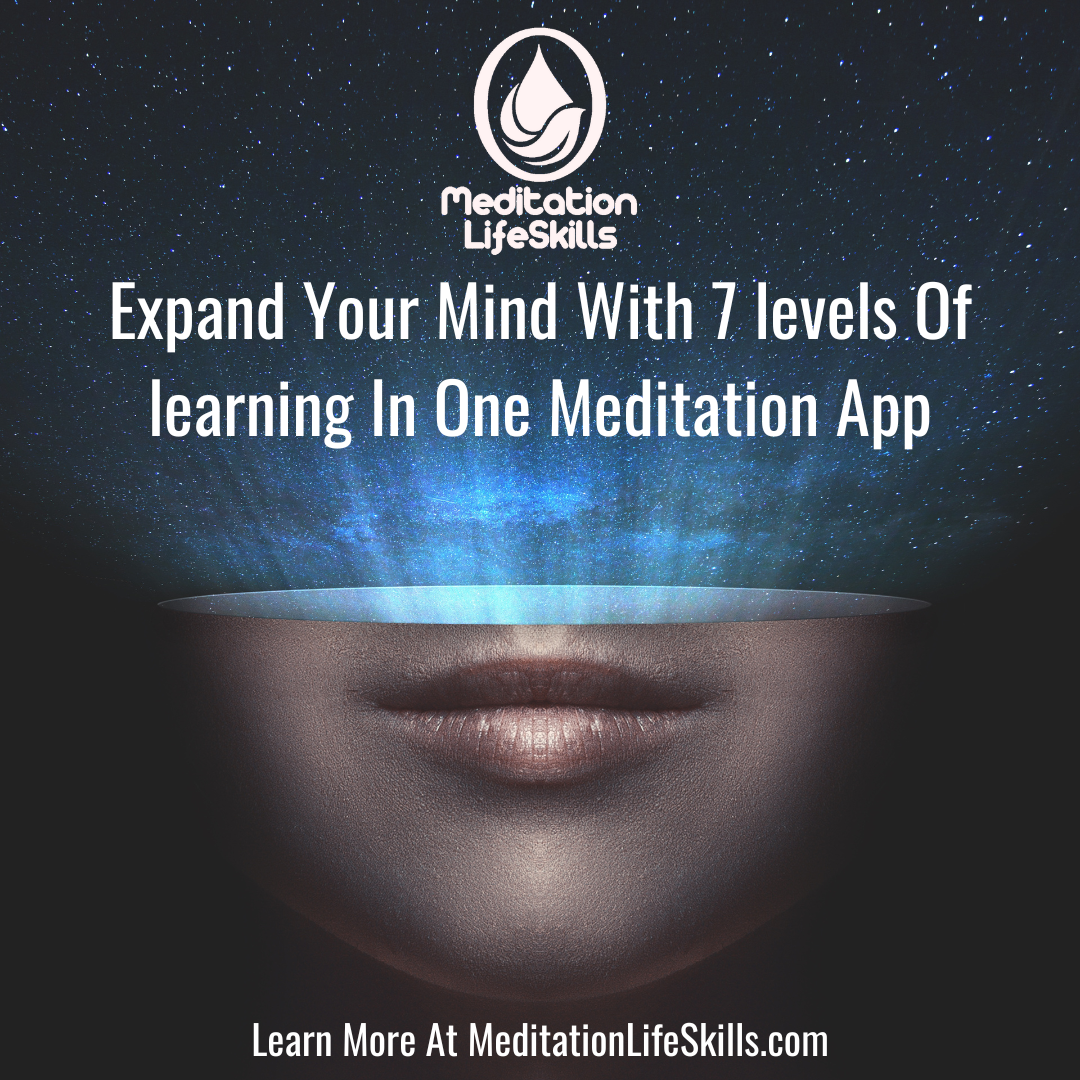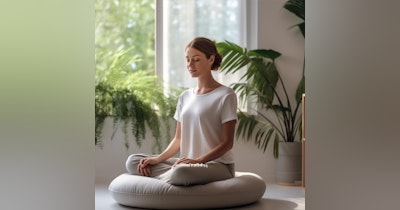Welcome to 'Mastering Mindfulness: A Step-by-Step Guide to Achieving Inner Peace,' where we will explore mindfulness's transformative power and provide practical steps to integrate it into your daily life.
In this fast-paced world, finding inner peace can be a real challenge. However, by cultivating mindfulness, you can experience profound calm and clarity amidst the chaos.
In this comprehensive guide, we will demystify the concept of mindfulness and its benefits. We will delve into the science behind it, highlighting how it rewires the brain to reduce stress and enhance overall well-being. Moreover, we will share a step-by-step approach to incorporating mindfulness into your everyday routine, allowing you to easily tap into your inner resources and navigate life's challenges.
PODCAST: The Difference Between Mindfulness And Meditation
Whether you are a beginner or have some experience with mindfulness, this guide is designed to meet you where you are and guide you towards a more present and peaceful way of living. So, if you are ready to embark on a journey of self-discovery and personal growth, let's dive in and master the art of mindfulness together.
Understanding Mindfulness
Mindfulness is the practice of being fully present and engaged in the current moment without judgment. It is about paying attention to your thoughts, feelings, and sensations with curiosity and acceptance. By cultivating mindfulness, you can develop greater self-awareness and a deeper connection with the world around you.
Mindfulness has roots in ancient Buddhist traditions but has gained popularity in recent years due to its numerous benefits. It is not about emptying the mind or achieving blissful emptiness; instead, it is about embracing the full spectrum of human experience and learning to relate to it with kindness and compassion.
The Benefits Of Practicing Mindfulness
The practice of mindfulness offers a wide range of benefits for both your mental and physical well-being. Research has shown that regular mindfulness practice can reduce stress, anxiety, and depression. It can also improve focus, attention, and memory, enhancing cognitive abilities and decision-making.
PODCAST: Essential Mindfulness Practices: 5 Reasons To Learn This Today
In addition to its mental health benefits, mindfulness positively impacts physical health. It can lower blood pressure, improve sleep quality, and boost the immune system. By reducing stress and promoting relaxation, mindfulness can help alleviate chronic pain and improve overall resilience.
The Science Behind Mindfulness
The growing body of scientific research on mindfulness has provided valuable insights into its mechanisms and effects on the brain. Studies using brain imaging techniques have shown that mindfulness practice activates the prefrontal cortex, the part of the brain responsible for executive functions such as attention, planning, and decision-making.
Furthermore, mindfulness has increased gray matter density in brain regions associated with self-awareness, empathy, and emotional regulation. This suggests that regular practice can lead to long-term changes in the brain, enhancing emotional well-being and improving interpersonal relationships.
How To Practice Mindfulness Effectively
Step 1: Setting The Intention For Mindfulness Practice
Before diving into mindfulness practice, it is essential to set a clear intention. Please take a moment to reflect on why you want to incorporate mindfulness into your life. I want you to know that identifying your intentions will provide a sense of purpose and direction as you begin this journey.
- What are your goals and aspirations?
- Are you seeking greater peace, clarity, or resilience?
Once you have defined your intention, please write it down and place it somewhere visible, like a journal or a sticky note on your mirror. This will remind you of your commitment and motivate you during challenging times.
Step 2: Cultivating Awareness Through Meditation
Meditation is one of the most powerful tools for developing mindfulness. It involves intentionally focusing on a specific object, such as your breath, a sound, or a sensation. You develop the muscle of awareness by bringing your attention back to the present moment whenever it wanders.
To begin your meditation practice, find a quiet and comfortable space where you can sit or lie down without distractions. Close your eyes and take a few deep breaths to relax your body and calm your mind. Then, bring your attention to the sensation of your breath, noticing the inhales and exhales without trying to change them.
You may notice thoughts, emotions, or physical sensations arising as you meditate. Instead of getting caught up in them or judging them, observe them with curiosity and let them pass. Remember, the goal is not to stop your thoughts but to develop a non-reactive awareness of them.
Step 3: Incorporating Mindfulness Into Daily Activities
While formal meditation is essential to mindfulness practice, bringing mindfulness into your daily activities is equally important. This means being fully present and engaged in whatever you do, whether eating, walking, or washing the dishes.
To incorporate mindfulness into your daily activities, choose one activity you do regularly, such as brushing your teeth or showering. As you engage in this activity, bring your full attention to the physical sensations, smells, and sounds associated with it. Notice any thoughts or judgments that arise, and gently bring your focus back to the present moment.
You can expand this mindful awareness to other daily activities with practice. By doing so, you will develop the ability to find calm and clarity amidst the busyness of life, ultimately enhancing your overall well-being.
Step 4: Managing Distractions and Staying Present
In our modern world, filled with distractions, staying present can be a real challenge. However, with mindfulness, you can train your mind to stay focused and present, even in the face of external disturbances.
One effective way to manage distractions is to cultivate a non-judgmental attitude towards them. Instead of labeling distractions as good or bad, observe them without getting caught up. This allows you to maintain a sense of stability and prevent distractions from derailing your mindfulness practice.
PODCAST: Tips For Practicing Mindfulness In Times Of Chaos and Stress
Another helpful technique is to use anchors to bring your attention back to the present moment. An anchor can be anything that helps you stay focused, such as your breath, a mantra, or a physical sensation. Whenever you notice your mind wandering, gently redirect your attention to your chosen anchor, bringing yourself back to the present.
Step 5: Deepening Your Practice With Advanced Techniques
Once you have established a foundation in mindfulness, you may explore more advanced techniques to deepen your practice. These techniques can help you cultivate compassion, loving kindness, and equanimity, expanding your capacity for self-acceptance and empathy towards others.
One advanced technique is loving-kindness meditation, which involves directing well-wishes towards yourself and others. Start by generating feelings of love, kindness, and compassion towards yourself, then extend these feelings to loved ones, neutral people, and even tricky individuals.
Another technique is body scan meditation, where you systematically bring your attention to different parts of your body, cultivating a sense of embodied awareness and relaxation. This practice can help you connect more deeply with your physical sensations and promote greater well-being.
PODCAST: Short Body Scan Guided Meditation For Relaxation
Resources For Further Exploration of Mindfulness
Numerous resources are available to support you if you want to deepen your understanding and practice mindfulness. Books like "The Miracle of Mindfulness" by Thich Nhat Hanh and "Wherever You Go, There You Are" by Jon Kabat-Zinn offer valuable insights and guidance.
Additionally, various mindfulness apps and online courses can provide structured teachings and guided meditations. These resources can help you consistently practice and grow in your mindfulness journey.
Conclusion: Embracing Mindfulness For A More Peaceful Life
In conclusion, mastering mindfulness is a powerful tool for achieving inner peace in today's hectic world. By understanding the concept of mindfulness, exploring its benefits, and engaging in a step-by-step practice, you can cultivate a greater sense of self-awareness, reduce stress, and enhance your overall well-being.
Remember, mindfulness is not about perfection or achieving a specific outcome; it is a lifelong journey of self-discovery and personal growth. So, embrace the present moment, let go of judgment, and allow mindfulness to transform your life one breath at a time.
May you find peace, clarity, and joy on this beautiful path of mindfulness.
















